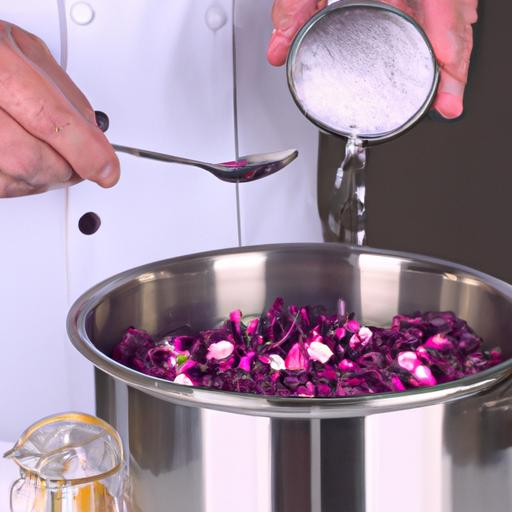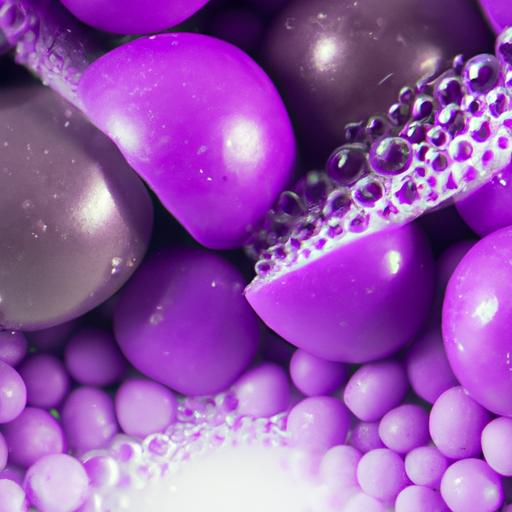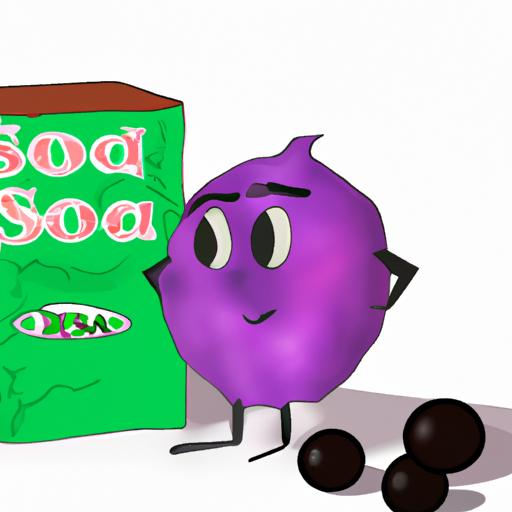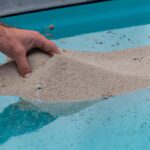Introduction

As a lover of Southern cuisine, have you ever wondered why baking soda is added to purple hull peas? If you have, then you’re in the right place! In this article, we’ll be exploring the benefits of adding baking soda to purple hull peas and how to do it right.
Purple hull peas are a staple in Southern cuisine, and for a good reason. They are packed with nutrients and have a distinctive flavor that sets them apart from other legumes. However, cooking purple hull peas can be challenging, and that’s where baking soda comes in. Adding baking soda to purple hull peas has been a long-standing tradition in Southern cuisine, but why is it necessary?
In this article, we’ll explore the science behind this culinary technique, the benefits of using baking soda, and how to do it right. So, let’s get started!
What are Purple Hull Peas?

Definition of Purple Hull Peas
Purple hull peas, also known as southern peas or cowpeas, are a type of legume that is commonly used in Southern cuisine. They are similar to black-eyed peas but have a more delicate texture and a sweet, buttery flavor.
The name “purple hull” comes from the fact that the peas are surrounded by a pinkish-purple pod that becomes papery and brittle when the peas are fully mature. These peas are harvested when the pods turn brown and start to dry out.
Nutritional benefits of Purple Hull Peas
Purple hull peas are a rich source of protein, fiber, and essential vitamins and minerals. They are particularly high in folate, a B-vitamin that is essential for healthy cell growth and development.
In addition, purple hull peas are also a good source of iron, which is important for healthy blood cells, and potassium, which helps regulate blood pressure. They are also low in fat and calories, making them an excellent choice for those who want to maintain a healthy weight.
Culinary uses of Purple Hull Peas
Purple hull peas are a versatile ingredient that can be used in a variety of dishes. They are often used in soups, stews, and casseroles, but can also be served on their own as a side dish.
In Southern cuisine, purple hull peas are often paired with ham hocks or bacon for added flavor. They can also be seasoned with herbs and spices such as thyme, garlic, and cumin, to add depth and complexity to their flavor.
What is Baking Soda?
Definition of Baking Soda
Baking soda, also known as sodium bicarbonate, is a white crystalline powder that is commonly used in baking. It is a weak base that can react with both acids and bases, making it a versatile substance in the kitchen.
Chemical properties of Baking Soda
Baking soda has a pH of 9, which means it is alkaline. When baking soda comes into contact with an acid, such as vinegar or lemon juice, it undergoes a chemical reaction that produces carbon dioxide gas. This reaction is what causes baked goods to rise during baking.
Culinary uses of Baking Soda
Apart from its use in baking, baking soda has a wide range of culinary uses. It is used as a leavening agent in pancakes, waffles, and cakes. It is also used as a tenderizer in meat dishes, as it helps to break down the proteins in the meat, making it more tender. Baking soda is also used in the preparation of beans, as it helps to break down the complex sugars in the beans, reducing cooking time and making them easier to digest.
Overall, baking soda is an essential ingredient in any kitchen, providing a range of benefits that make cooking and baking easier and more efficient.
Why Put Baking Soda in Purple Hull Peas?
Explanation of the chemical reaction between Baking Soda and Purple Hull Peas
When you add baking soda to purple hull peas, a chemical reaction occurs that raises the pH of the water. This makes the water more alkaline, which helps to break down the tough outer skins of the peas. This, in turn, helps to speed up the cooking process and makes the peas more tender.
Benefits of adding Baking Soda to Purple Hull Peas
Aside from the faster cooking time and more tender peas, there are other benefits of adding baking soda to purple hull peas. For one, it helps to preserve the color of the peas. When peas are cooked for a long time, they tend to turn a dull gray color. However, adding baking soda helps to maintain the vibrant color of the peas, making them more visually appealing.
Additionally, baking soda can help to reduce the gas-producing properties of purple hull peas. This is because it helps to break down the complex sugars in the peas that can cause gas and bloating.
Effect of Baking Soda on the texture and flavor of Purple Hull Peas
When you add baking soda to purple hull peas, it can affect the texture and flavor of the final dish. The peas will be more tender, but they may also be slightly mushy. Additionally, the flavor of the peas may be slightly altered. Some people enjoy the subtle sweetness that baking soda adds, while others find it overpowering.
It’s important to note that while baking soda can be beneficial when cooking purple hull peas, it should be used in moderation. Too much baking soda can result in an unpleasant taste and texture. It’s best to start with a small amount and adjust as needed.
How to Add Baking Soda to Purple Hull Peas?
Cooking purple hull peas with baking soda is a technique that requires precision and care. Here’s a step-by-step guide on how to add baking soda to your purple hull peas:
Step 1: Soak the Purple Hull Peas
Before cooking, you’ll need to soak the purple hull peas overnight to soften them. Drain the water in the morning.
Step 2: Add Baking Soda
In a large pot, add the soaked purple hull peas and enough water to cover them. Add a pinch of baking soda, about 1/4 to 1/2 teaspoon, and stir thoroughly. Be careful not to add too much baking soda, or it will affect the flavor and texture of the peas.
Step 3: Cook the Peas
Bring the pot of purple hull peas to a boil, then reduce the heat to low and allow them to simmer for about 45 minutes to an hour. Keep an eye on the water level and add more if necessary.
Step 4: Serve and Enjoy
Once the purple hull peas are cooked, drain the excess water and serve them hot with your favorite Southern dish.
Tips on the Appropriate Amount of Baking Soda to Add
As mentioned earlier, adding too much baking soda to your purple hull peas can affect their flavor and texture. The general rule of thumb is to add a pinch, about 1/4 to 1/2 teaspoon, of baking soda per cup of dried peas. However, the appropriate amount of baking soda may vary depending on the amount of peas you’re cooking. Start with a small amount and adjust accordingly. Remember, it’s always better to err on the side of caution and add more later if needed.
Conclusion
In conclusion, adding baking soda to purple hull peas is not just a Southern tradition, but a culinary technique backed by science. Baking soda helps to soften the peas, reduce cooking time, and enhance their flavor.
However, it’s crucial to add the right amount of baking soda to avoid ruining the dish. Too much baking soda can cause the peas to become mushy and lose their natural flavor.
We hope this article has shed some light on why baking soda is added to purple hull peas and how to do it right. By following the steps outlined in this article, you can enjoy perfectly cooked, flavorful purple hull peas every time.
So, the next time you’re cooking purple hull peas, don’t forget to add a pinch of baking soda and enjoy the taste of Southern cuisine at its best!



